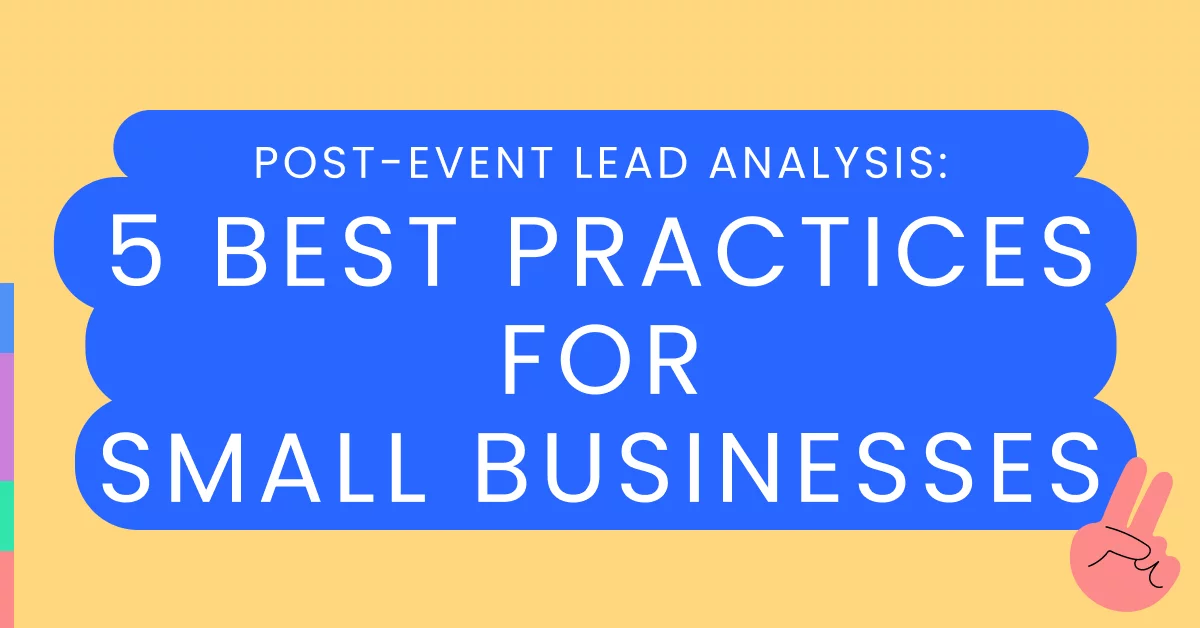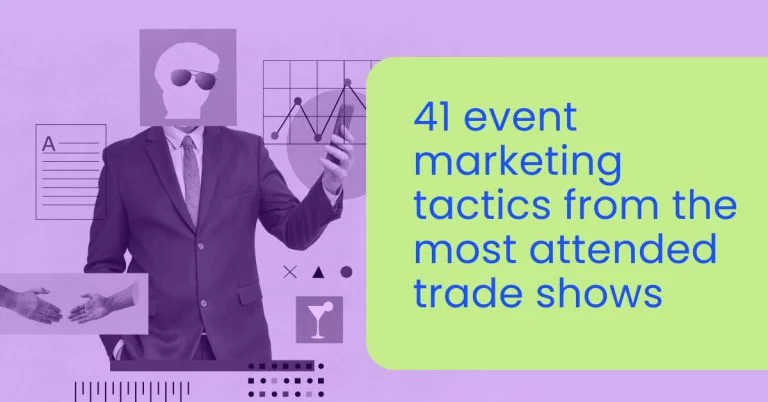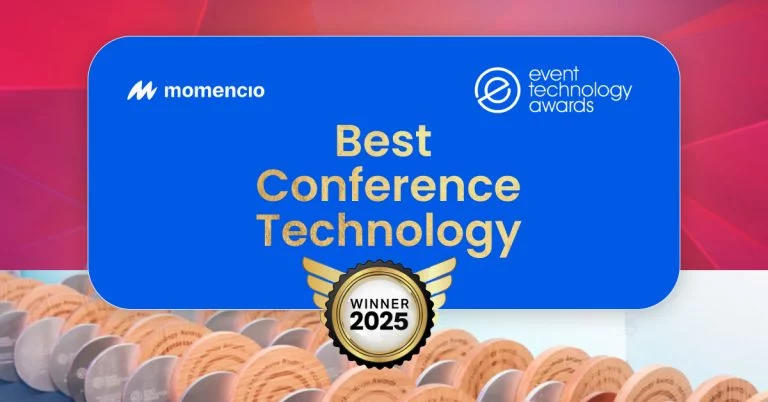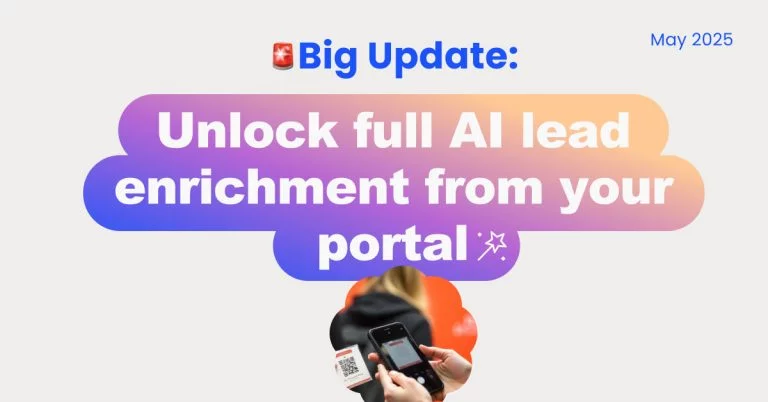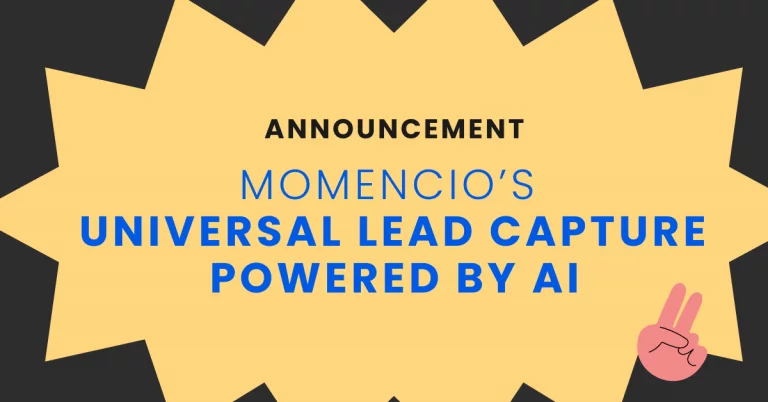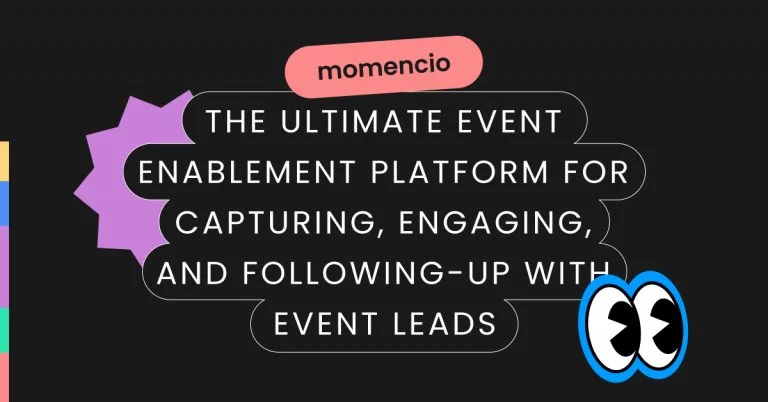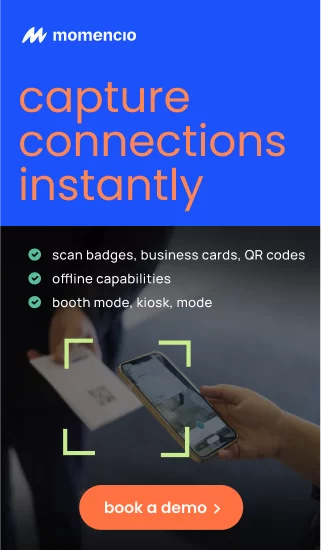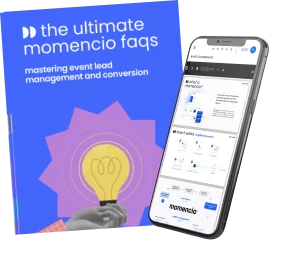So, you have survived the chaos of the event floor – handshakes, quick pitches, and maybe a few too many cups of coffee. Now, you are back at the office, staring at a list of leads, feeling pretty solid about what comes next. But then you let them sit with you for too long and before you know it, they are worthless. Event leads are like avocados. They are ripe for only a short window, and if you do not act fast, well, they go bad.
For small businesses, the challenge is not just capturing leads, it is knowing what to do with them after the fact. Without a solid post-event plan, even the most promising leads can fade into obscurity faster than last year’s trade show swag.
Leads need attention, and fast. If you wait too long to follow-up or fail to analyze who is worth pursuing, those leads will quickly lose interest and move on.
The secret is in the follow-up and post-event analysis. It is not about blasting out generic emails or waiting for leads to reach out. It is about taking what you learned from each conversation and turning that into meaningful, personalized action. That is how you turn event energy into real, tangible business.
We have laid out five best practices that small businesses can use to handle post-event lead analysis like pros. These steps will help you stay organized, engage with leads the right way, and ensure that your hard work at the event pays off.
1. Organize and prioritize leads using lead scoring
Not all leads are created equal. Some are genuinely interested in what you offer and ready to move forward, while others are just browsing. The key is to figure out who is who before you invest time and resources into follow-up. That is where lead scoring comes in.
Lead scoring is like creating a sorting system for your leads, based on their potential value to your business. It could be as simple as categorizing them into high, medium, and low priority, or using more detailed criteria like the lead’s job title, level of engagement during the event, or specific products they showed interest in. The goal is to rank leads so that you can focus on the ones most likely to convert.
For small businesses with limited resources, this is a game-changer. Instead of trying to follow up with everyone, you can dedicate your attention to the leads that matter most. It could be something as straightforward as rating each lead from one to five, or integrating a lead-scoring system directly into your CRM.
Let’s understand this with an example – one spent twenty minutes at your booth, asking in-depth questions about your services, while another dropped by for a free pen and vanished. You want to prioritize that first lead – make sure they get a follow-up that continues the conversation. The second? They might get a more general email, just in case they are interested down the road.
With lead scoring in place, you are not just reacting—you are acting with intention, putting your best efforts into the leads that are most likely to drive results.
2. Implement a follow-up strategy based on data
You have prioritized your leads, but now comes the part where most businesses stumble—the follow-up. Sending a generic email to every lead is easy, but it is also ineffective. What works is a targeted approach, where your follow-up strategy is based on the data you gathered during the event.
Think of every lead as a breadcrumb trail, with each interaction giving you clues about what matters to them. Did they ask specific questions about a product? Did they seem more interested in pricing or features? Did they mention any business challenges you can help with? The more you pay attention to these details, the more tailored your follow-up can be.
Small businesses, especially, have an advantage here. With fewer leads than a large company, you can afford to be more personal in your follow-up. For example, if someone showed interest in one of your key services, do not just send them a generic thank-you email. Instead, follow up with content that speaks directly to that interest—whether it is a case study, a demo offer, or even a one-on-one meeting.
Timing is also crucial. Follow up too late, and your lead has moved on. Too early, and you might come across as pushy. The best strategy? A quick initial touchpoint—like a short email or a personalized LinkedIn message—within 24 hours of the event. Then, based on their level of interest, you can plan for deeper engagement down the line.
The trick is to use the information you have gathered as your guide. Following up without context is like shouting into the wind. But when you base your strategy on what you know about each lead, your follow-ups feel intentional, thoughtful, and most importantly—valuable.
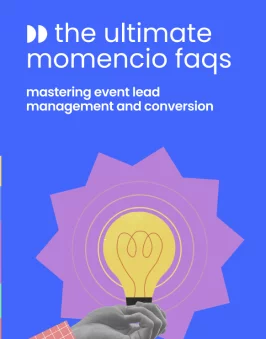
3. Sync with your CRM for seamless lead management
Your event leads are organized and your follow-up strategy is set—but how do you ensure nothing slips through the cracks? For small businesses, juggling leads can feel like a balancing act, and this is where your CRM system becomes your best friend.
Syncing event leads with your CRM allows you to keep everything in one place. Instead of shuffling through spreadsheets or manually tracking follow-ups, a good CRM will give you a clear view of where each lead is in the sales process. This way, you can easily see who needs a follow-up, who has already been contacted, and which leads are closer to conversion.
The beauty of using a CRM is that it centralizes communication. Every email, phone call, or meeting can be logged, so you are never left wondering, “Did I already follow up with this person?” It also helps your team stay aligned—if you are working with a small sales team, everyone can access the same lead data, ensuring consistent communication and no missed opportunities.
Small businesses do not need an overcomplicated CRM with endless features. The key is finding one that fits your workflow, integrates easily with your existing tools, and helps automate simple tasks like sending follow-up emails or reminders. A CRM with lead-scoring capabilities can even prioritize which leads need attention first, saving you time and energy.
Ultimately, syncing your leads with a CRM ensures that your post-event lead management runs like a well-oiled machine. You will know exactly where each lead stands and what needs to be done next—leaving no room for missed opportunities or forgotten follow-ups.
4. Measure ROI to assess lead quality and campaign success
Leads are great, but if they do not convert into actual business, they are just numbers on a spreadsheet. This is where measuring ROI comes into play. It is not enough to count how many leads you gathered at an event; you need to know how valuable they are to your business. For small businesses, every dollar and minute spent at an event needs to show its worth.
Start by tracking the journey of each lead from event contact to conversion. How many of your event leads responded to follow-ups? How many scheduled a demo or requested more information? How many turned into paying customers? These are the metrics that will tell you if the event was worth the investment.
But it is not just about conversions. Even leads that do not immediately close can provide value. Maybe a lead did not buy today but joined your email list for future updates, or shared your information with a colleague. These smaller actions still contribute to long-term growth.
The real insight comes from understanding which types of leads turned into customers and why. Did your highest-converting leads come from a specific industry? Were they drawn in by a particular offer or product? By analyzing this data, you can refine your event strategy for the next time, focusing on what works and cutting out what does not.
For small businesses, this kind of insight is gold. It allows you to plan better, invest smarter, and make sure that future events deliver even more value. Measuring ROI is not just about justifying your event spend—it is about learning what leads to success and making it repeatable.
5. Refine your approach with continuous data evaluation
The event may be over, but your learning is just beginning. If you want to get the most out of your lead analysis, you need to treat it as an ongoing process. Continuous data evaluation is not just about looking back at what happened—it is about using those insights to sharpen your approach for the future.
After each event, take the time to review the entire lead journey, from initial interaction to conversion (or loss). What worked? What did not? Maybe you discovered that a certain product pitch resonated more with attendees, or perhaps you realized that leads from one particular industry were more likely to convert than others.
The beauty of lead analysis is that it allows you to spot patterns and trends that you can use to fine-tune your strategy. It is not about guessing anymore—it is about making informed decisions based on real data. Small businesses, in particular, benefit from this because every improvement, no matter how small, has a direct impact on growth and efficiency.
Do not be afraid to adjust your process. If you find that your follow-up emails are not getting responses, change your messaging. If your lead scoring system missed high-potential leads, tweak your criteria. The goal is not to get it perfect every time—it is to continuously improve with each event.
By evaluating your post-event data regularly, you create a cycle of refinement that makes each event more successful than the last. The small shifts you make now will accumulate, turning your post-event process into a well-oiled machine that consistently delivers results.
Do’s and don’ts of post-event lead follow-up
A well-executed follow-up strategy can make all the difference in converting event leads into paying customers. But there are some key actions that can either accelerate or derail your efforts. Here’s a quick guide on what you should—and should not—do when following up with leads after an event.
Do’s:
- Do personalize your communication.
Use the information you gathered during the event to tailor your follow-up message. Reference specific points from your conversation or the product they were interested in. Personalization shows that you remember the interaction and makes the lead feel valued. - Do follow up within 24-48 hours.
Timing is crucial. The sooner you follow up after an event, the better. Leads are most engaged when the event is fresh in their minds. A quick, thoughtful email or LinkedIn message within 24-48 hours keeps the connection alive. - Do segment your leads.
Not all leads are the same. Organize them based on factors like engagement level, interest, or job role. Prioritize those with the highest potential and tailor your messaging accordingly. - Do provide value in your follow-up.
Instead of just thanking them for stopping by, give them something useful. This could be a relevant case study, an offer for a demo, or content that speaks to their specific interests. Adding value from the start helps build trust and keeps the conversation going. - Do use multiple touchpoints.
Not every lead will respond to your first email. Create a series of follow-ups across different channels—email, social media, even direct mail if it suits your business. Persistence, when done thoughtfully, can keep your brand top of mind.
Don’ts:
- Do not send generic emails.
A one-size-fits-all approach never works. Avoid sending out mass emails that lack personalization. Leads can spot generic emails instantly, and it sends the message that you are not really interested in their specific needs. - Do not overwhelm leads with information.
Keep your follow-ups concise and to the point. Bombarding leads with too much information right away can be overwhelming and may cause them to disengage. Start with a simple message and build on it with future interactions. - Do not delay your follow-up.
If you wait too long to reach out, your leads will lose interest or forget about you altogether. Timing is everything in post-event follow-up. The longer you wait, the colder the lead becomes. - Do not push for a hard sale too soon.
Building a relationship takes time. Avoid jumping straight into aggressive sales pitches. Instead, focus on continuing the conversation and learning more about their needs. Lead nurturing is about cultivating trust before pushing for a close. - Do not ignore unresponsive leads.
Just because a lead does not respond to your first email does not mean they are not interested. They might have been busy or missed the message. Have a plan for second and third follow-ups to re-engage these leads in a more personalized way.
Conclusion
Events are more than just a chance to showcase your brand—they are an opportunity to build meaningful connections that drive your business forward. But the magic does not happen during the event itself. It happens in the days and weeks that follow, when you take those leads and turn them into customers.
For small businesses, post-event lead analysis is where the real value lies. By organizing and prioritizing your leads, creating personalized follow-ups, integrating with a CRM, measuring ROI, and continuously refining your approach, you are ensuring that every event delivers tangible results. It is not about doing more—it is about doing it smarter.
The next time you step off the event floor, know that your work is just beginning. With the right post-event strategy, you can turn every handshake, conversation, and business card into real, long-term growth for your business.
FAQs
- What is lead scoring, and why is it important for small businesses?
- Lead scoring is the process of ranking leads based on their likelihood to convert into customers. It helps small businesses prioritize their efforts and focus on leads with the highest potential for conversion, saving time and resources.
- How soon should I follow up with leads after an event?
- Ideally, you should send a quick follow-up within 24 hours to keep the connection warm. After that, plan more personalized outreach based on the level of interest shown by the lead.
- Can a CRM really make a difference in lead management?
- Yes, a CRM helps you centralize all lead information, track interactions, and ensure that no follow-ups are missed. For small businesses, it simplifies the lead management process and improves organization.
- How can I measure the ROI of an event?
- To measure event ROI, track the leads generated, follow their journey through your sales funnel, and assess how many convert into paying customers. Include other actions like sign-ups, referrals, and engagement in your calculations.
- What if my post-event strategy is not working?
- If your strategy is not yielding results, revisit your lead scoring, follow-up timing, and messaging. Use the data you have collected to identify areas for improvement and test new approaches for future events.
Interesting Facts from Research
- Personalized follow-ups emails produce a 2.7x higher CTR and 5.7x more revenue.
- Leads that are followed up within 24 hours are 60 times more likely to convert.
- Small businesses that implement CRM systems see a 29% increase in sales productivity.
